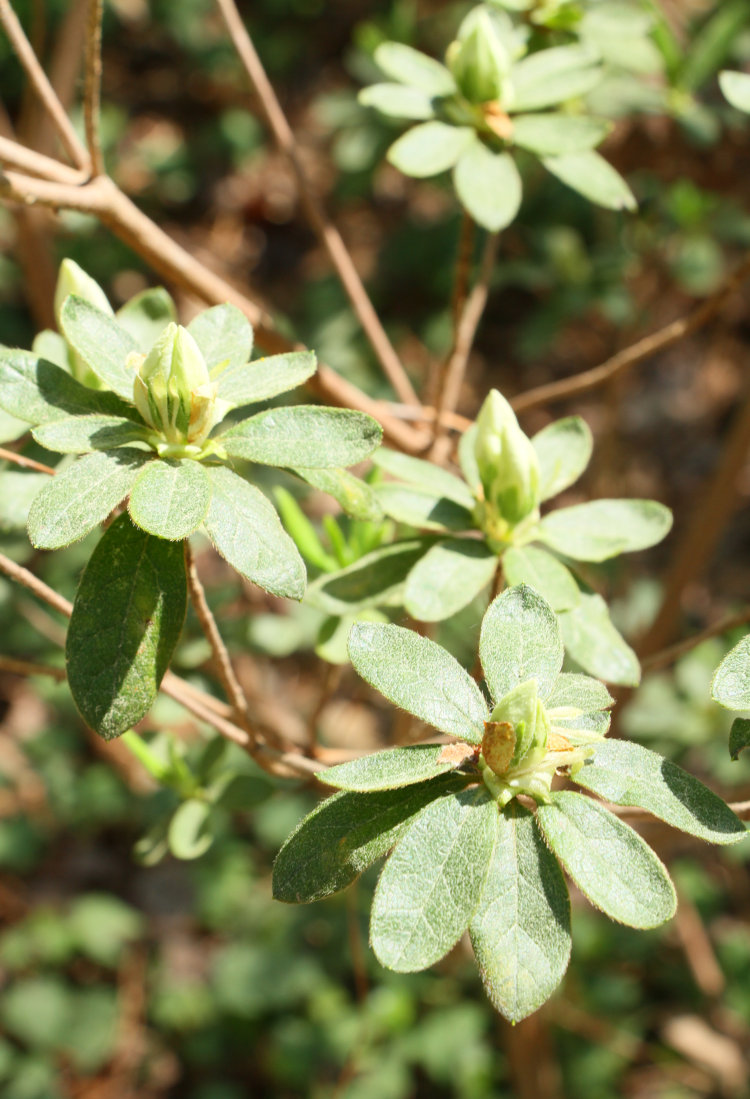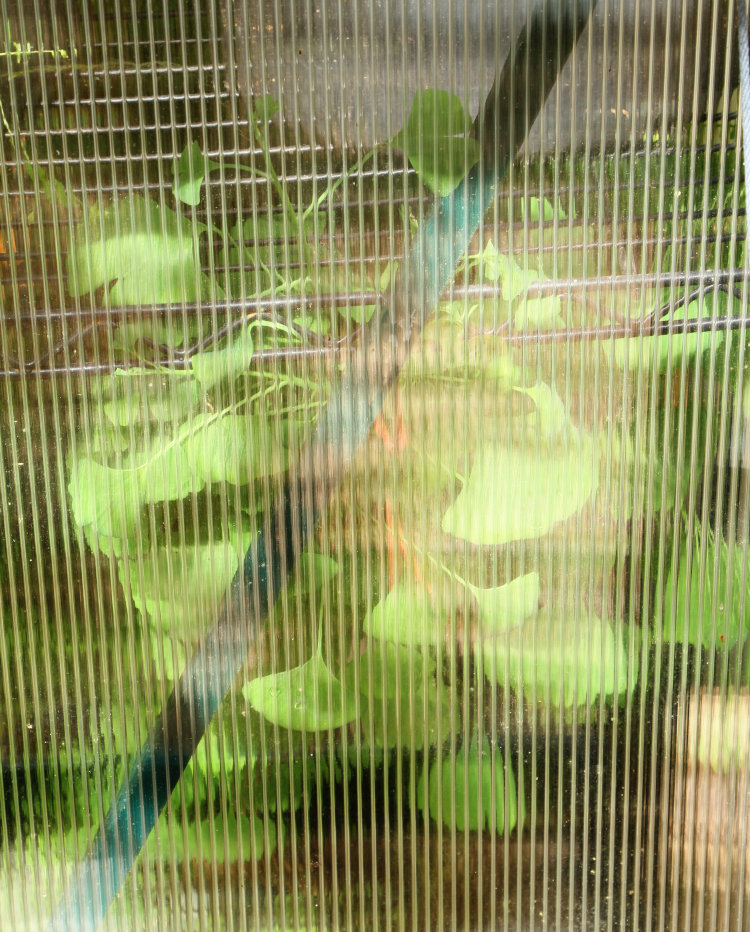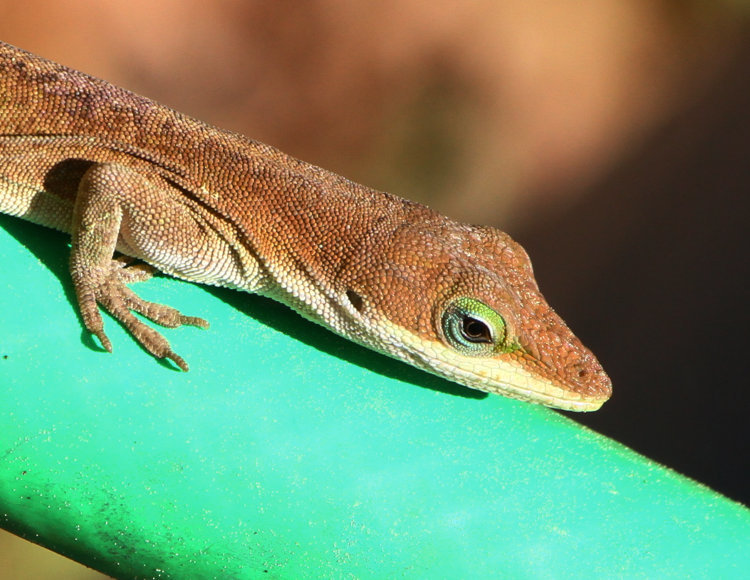
So, it’s more of the same images that I get every spring, because they’re all on Walkabout Estates, but it’s what I could get today and it’s cheery, so deal. It’s not pics of food or me dancing in a halter top, you know? Okay then.
One of the azalea bushes out front is in full bloom, while the other, which is right alongside, the same species, and planted at the same time, has only two open blossoms and the rest still buds. Go figure. It’s like that neighbor that’s always the first to get the Halloween decorations up.
Meanwhile, out back, we have even less.

This is from the white azalea bush, which is huge and healthy, just not ready to bloom yet. It always does very well, but it runs later than the others, usually about the time that the mantids hatch (which I hope doesn’t take place while I’m away, but if given the choice between mantids and the eclipse, well…)
The tall ginkgo (Ginkgo biloba,) planted in the yard, is slowly starting to stretch out.

You can see the indications that pine pollen season is well underway, and a little yellow thing that might be an arthropod, and might not – I didn’t see it when I was getting the shot, but I also wasn’t using the macro lens. The tree seems happy with its location, so we’re pleased with it, but it stands in marked contrast to the potted, dwarf ginkgos that spent the winter in the greenhouse.

It wasn’t actually banging on the glass, which isn’t glass anyway, but that was the impression that I got. It and its sibling will probably move out in about two weeks – we still have some cold overnight weather to contend with. The ginkgos probably don’t have to be in the greenhosue, but we lost a few potted plants one year to a long cold spell that penetrated through the pot and soil, so the potted plants go into one of the greenhouses over the winter.
Now two for The Girlfriend.

In the past two days the blooms of this one started kicking it, and they’re one of her favorites because they have a very pleasant smell, despite the flowers being very small and unassuming. This goes by a wide variety of names, including Japanese silverberry, autumn olive, and spreading oleaster, but Elaeagnus umbellata is the biological name anyway. I felt sure that I’d identified it here before, but there’s no sign of any of the names in the tags, so I suppose I’d only featured the unidentified flowers or berries in previous posts. The only problem we have with the plant is that it’s a small tree, but leggy and a bit droopy, and sitting right by the gate as it does, it’s often in the way. I actually put up a simple arch to hold it up, but it stretches out over the edges and drops off.
Of course, what spring would be complete without the cherry tree?

The Yoshino cherry (Prunus × yedoensis) is doing quite well itself, shown here with some remaining late flowers (minus their white petals,) as well as a selection of developing cherries. The cherries never get larger than 8-10mm and are mostly pit, but the birds still appreciate them, so there’s a narrow window when I can capture images of those, a few weeks hence. This tree, along with the almond tree, tulips, and one of the rose bushes, has been receiving regular coatings of the deer repellent ever since it started to bud out, since the deer were far too fond of the new shoots and kept it cropped from its natural ‘weeping’ nature, but we’ve found that, by treating it early, the deer quickly discover that it tastes like shit and will only sample it a couple times a year to confirm that it still tastes like shit. Provided I maintain the repellent, of course.
[If you have the interest, it can be found here, Recipe #2 – a little involved to make, but works extremely well, and will even keep in a bottle over the winter. It’s concentrated, so mix about 1:10 with water and apply with a spray bottle.]
Naturally, we have a guest appearance by the blackhaw viburnum (Viburnum prunifolia.)

There were plenty of ways to approach the blossom clusters, many of which I’ve done before, but I liked the contrast with the blue sky best this time, along with the abstract modern-fart shapes of the leaf shadows. Had you noticed them? Now you have.
It was warm enough today, so we have some critters too.

A pair, at least, of Carolina anoles (Anolis carolinensis) have been appearing the moment it gets warm, largely because I believe they spent the winter in the crack in the wall around the dryer vent pipe, so they never really hibernated. Here, however, one is venturing across the hose that drains the overflow from one of the rain barrels – it could have blended in a little better than this, but I suspect the brown color is to absorb more UV radiation. Let’s have a closer look, shall we?

I never get tired of that mosaic-nature of their skin, even if the eye-shadow is a bit too 70s.
But in the downspout that the hose empties into, was another find.

From having seen it there before, I suspected that this green treefrog (Dryophytes cinereus) was hiding down the spout, and wanted to get them both in the frame if I could, but my maneuvering around wasn’t kosher to the anole and it moved too far away to frame properly, so we have this one all by itself. I find it hard to believe that this exposed downspout remains warm enough during the overnight chills, even when it leads briefly underground to a longer drainpipe that empties a few meters further down the yard, but any number of treefrogs continue to use it, so what do I know? Meanwhile, we also need a closer look at this one.

That’s enough to see that, even sheltered as it is, it cannot escape the pine pollen. Nothing escapes the pine pollen! Little chartreuse bastards (the pollen, I mean.)
One last, then I’ll let you go.

We received several rose bushes late last year, discards from a nursery, that got a head start in the adjunct greenhouse and have now been moved onto the deck. Despite being lined up together, only one of them proved susceptible to an aphid infestation – I blasted them off a couple times with a high-pressure water stream, and we’ve had a couple of overnight near-frosts since then, so their numbers have been decimated. The eggs seen here, however, look a lot like lady beetle eggs, which makes sense because aphids are their main food source, and if you look closely, you’ll see one aphid hanging out as if in defiance of this, below and slightly right of the eggs. Go ahead, stay right there, nothing will come of it, I swear…
So, that catches us up a little, for about an hour of shooting, and I feel more normal now. Well, normal for me…



















































